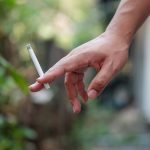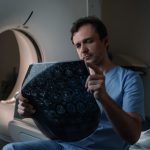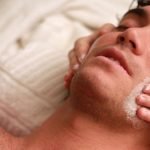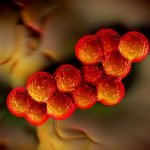Prolotherapy in Cosmetic Dermatology: Intradermal Proliferative Therapy (IPT)
David A. Tallman, DC, NMD
Proliferative therapy in cosmetic dermatology is achieved by inducing mechanical or chemical trauma (dermabrasion, chemical peel), intense light exposure (laser, intense pulse light), or through the deposition of growth factors in the dermis. A paradigm shift toward cellular rejuvenation includes anatomically correct cosmetic procedures designed to better serve the integrity of dermal cells through bypassing and leaving intact the protective stratum corneum and introducing the dermal proliferants underneath the native “acid mantle.” With the advent of digital dermascopes, profilometers, and cutaneous image sensors, these novel procedures can be effectively qualified to patient satisfaction in the physician’s office. This paper serves as a rationale for intradermal proliferative injection therapies to improve the epidermal, dermal, and hypodermal cellular matrix.
Introduction
The term prolotherapy was coined in the 1950s by U.S. surgeon George S. Hackett, although the method of treating joints with an irritating solution was first published by oral surgeon L.W. Schultz (1937). Hackett authored papers and medical textbooks on the subject. His research revealed that tendon tissue can be proliferated in vivo via the injection of an immune-stimulating solution of an arachidonic acid analog (psyllium seed extract) (Hackett and Henderson, 1955). Chemotactic to granulocytes and macrophages, it induces the immune system to commence a micromanaged cascade of the inflammation-proliferation-remodeling phenomenon so programmed in our genetic code. The end result is the autoformation of dense, healthy tissue. A 40% diameter increase was observed in tendons of rabbits after three treatments with the absence of nerve or blood vessel destruction upon histological examination of treated tissue at nine months (Hackett, 1956). Klein et al. demonstrated a proliferation of human sacroiliac ligament tissue with a dextrose-glycerine-phenol solution after six weekly injections with improvements determined upon biopsy microscopic examination at three months post treatment (1989). Demonstrated was a hypercellularity due to an increased number of active fibroblasts and a statistically significant increased ligament fiber diameter. Proliferative therapy in orthopaedic medicine has been achieved by the injection of irritants, osmotic shock agents, chemotactic agents, and growth factors. Similar treatments used in cosmetic dermatology to facilitate a controlled microtrauma inflammatory response on skin collagen are the ablative and nonablative procedures: dermabrasion, lasers, chemical facial peels, intense pulsed light, and others. The popularity of botulinum toxin and hyaluronic acid preparations has demonstrated public acceptance to needles for aesthetic purposes and has facilitated a new trend of dexterous facial injection techniques and customized collagen rejuvenation cocktails.
Collagen Synthesis
Fibroblasts from photodamaged areas have the means to produce procollagen at the same level as fibroblasts from sun-protected areas (Varani et al., 2001). When the skin is left untreated, the fibroblasts remain less active and the dermis continues to atrophy, marking an appearance of rhytids and poor turgor. Proliferative therapy may stimulate microtrauma to skin cells in order to cause the release of inflammatory cascade-inducing cellular contents into the desired area. Cellular debris attracts local granulocytes, which immediately begin to phagocytize the area and release lytic enzymes and cytokines. The treated area becomes engorged with increased blood, nutrients, oxygen, and other components necessary for repair. At the end of the process, the area ultimately becomes rejuvenated. Although the exact mechanism of organic acids (glycolic acid) on collagen remains elusive, the results are consistent.
Current Methods
The ideal facial rejuvenation method would require few office visits, be nonablative, time-friendly, gentle to the body, and effective. Autologous fibroblast injection seems to fit this description (Watson et al., 1999), but cost sets this treatment out of range for many patients. The technique of intradermal deposition of traditional peel constituents is rapidly spreading in medicine. Electronic and spring-loaded syringe-holding guns are marketed for intradermal injection assistance. Four- and six-millimeter needles have become widely available over the past couple of years. Many new aesthetic injection societies exist touting solutions of dilute glycolic acid, glycosaminoglycans, antioxidants, hormones, and vitamin cocktails through the stratum corneum to directly stimulate the lower epidermal, dermal, and hypodermal layers despite lack of controlled studies. Below are examples.
Antioxidants/Vitamins/Organic Acids
Epicatechin gallate (ECG), a polyphenol found in green tea, causes normalization of collagen fiber orientation, aids in compacting cells, and stimulates rapid angiogenesis when injected intradermally into wounds (Kapoor et al., 2004). Transretinoic acid administered intradermally improves skin turgor, facilitates beneficial reorganization, increases the population of collagen fibers, and shortens response time to wrinkle reduction as compared with topical use (Personelle et al., 1997). A cocktail of vitamins A, E, and C used intradermally for postsurgical tissue necrosis has been shown to stimulate angiogenesis and improve UV protection (Personelle et al., 1998). Ascorbic acid significantly increases dermal papillae, skin density, reduces fine lines and wrinkles, and provides a marked improvement of photoaged microrelief with topical applications (Hanson and Clegg, 2003; Raschke et al., 2004; Humbert et al., 2003). Alpha-lipoic acid has shown to decrease skin roughness (Beitner, 2003). Citric acid increases epidermal and dermal GAGs, and aids epidermal thickness (Ernstein et al., 1997). Lactic acid has many cosmetic benefits, with one study showing that a strong topical solution is needed to influence the dermis (Smith, 1996). Dimethylaminoethanol (DMAE) decreases skin looseness (Uhoda et al., 2002).
Intradermal glycolic acid (GA) is undergoing exponential use in the United States under light of many studies. GA stimulates release of cytokines such as IL-1, increases native epidermal and dermal hyaluronic acid, and facilitates collagen gene expression (Okano et a., 2003; Bernstein et al., 2001).
Hormones
Topical estradiol appears to have dermal rejuvenating capabilities in postmenopausal women (Bernstein et al., 2001), estrogen is known to stimulate type I and type III collagen synthesis (Fuchs et al., 2003). Estrogen has also been demonstrated to reduce healing time of wounds in the elderly (Lee et al., 2004; Ashcroft et al., 1999). Phytohormones also have been shown to reduce total surface area and depth of wrinkles (Bauza et al., 2002). Growth hormone supplementation has been shown to increase collagen bundle numbers and is intricately involved in collagen synthesis (Aloia and Grover, 1976; Edmondson et al., 2003).
Goal of Treatment
The ultimate goal is to increase cellularity, normalize collagen fiber orientation, and raise native dermal glycosaminoglycan content to maximize tissue water retention and improve skin turgor. In theory, any area normally treated by chemical facial peels could benefit more from intradermal proliferation therapy. The advantage of stratum corneum layer bypass is the ability to use a weaker concentration of peeling agents needed to induce desired proliferation while not disrupting the protective outermost layers affording UV protection, thereby decreasing facial skin cancer risk factors. Preserving the “acid mantle” is important in light of providing microbial defense and as a barrier to the outside world (Fluhr et al., 2001). The length of needle should be tailored to reach the corresponding pathological level and the substance carefully chosen to match layer needs. The type of wrinkle to be treated needs to be identified, as underlying pathologies differ among rhytids. Type I rhytids are atrophic and type II are elastotic (Pierard et al., 2004). Atrophic wrinkles are treated by increasing collagen bundles in dermis and hypodermis, elastotic wrinkles are treated in the lower epidermis by restoring collage strand arrangement.
Conclusion
Attaining maximal skin hydration of the face and attempting to restore the dermal collagen matrix to that of youth will address signs of wrinkling, atrophy, and degenerative changes. Dermal irritation therapies have a long history of being safe and effective (Peters, 1991), but stronger topical solutions must be used to reach the depths of the dermis, if weak solutions do not (Smith, 1996). Having to increase dose can be avoided and easily bypassed with a 4-mm needle. Penetration into the skin with a 30 to 32 gauge 4-mm needle ensures near 100% absorption of solution and should allow for a minimal concentration to exert therapeutic benefit, as it has been elucidated that stronger vitamin creams enhance clinical response (Kligman and Draelos, 2004). Preservation of the stratum corneum allows for uninterrupted UV ray and epidermal hydration loss protection. The face is well suited for intradermal proliferative treatments because of extensive capillary perfusion and direct cranial enervation; the face also possesses a suitable depth of dermal and adipose layers with a rapid regenerative capability. The demands of the whole dictate and fuel new therapies to emerge. Although complacent physicians may be resistant, the public is expectant and welcoming of newer and better procedures, especially in the out-of-pocket field of cosmetic dermatology. Like no-till farming, intradermal proliferative therapy is now a reality that needs to be studied.
References
Aloia JF, Grover RW: Dermal changes in osteoporosis following prolonged treatment with human growth hormone, J Cutan Pathol 3:222-31, 1976.
Ashcroft GS et al: Topical estrogen accelerates cutaneous wound healing in aged humans associated with an altered inflammatory response, Am J Pathol 155:1137-46, 1999.
Bauza E et al: Date palm kernel extract exhibits antiaging properties and significantly reduces skin wrinkles, Int J Tissue React 24:131-6, 2002.
Beitner H: Randomized, placebo-controlled, double blind study on the clinical efficacy of a cream containing 5% alpha-lipoic acid related to photoageing of facial skin, Br J Dermatol 149:841-9, 2003.
Bernstein EF et al: Glycolic acid treatment increases type I collagen mRNA and hyaluronic acid content of human skin, Dermatol Surg 27:429-33, 2001.
Edmondson SR et al: Epidermal homeostasis: the role of the growth hormone and insulin-like growth factor systems, Endocr Rev 24:737-64, 2003.
Ernstein EF et al: Citric acid increases viable epidermal thickness and glycosaminoglycan content of sun-damaged skin, Dermatol Surg 23:689-94, 1997.
Fluhr JW et al: Generation of free fatty acids from phospholipids regulates stratum corneum acidification and integrity, J Invest Dermatol 117:44-51, 2001.
Fuchs KO et al: The effects of an estrogen and glycolic acid cream on the facial skin of postmenopausal women: a randomized histologic study, Cutis 71:481-8, 2003.
Hackett GS, Henderson DG: Joint stabilization; an experimental, histologic study with comments on the clinical application in ligament proliferation, Am J Surg 89:968-73, 1955.
Hackett GS: Ligament and Tendon Relaxation Treated by Prolotherapy, ed 3, 1956, Charles C. Thomas.
Hanson KM, Clegg RM: Bioconvertible vitamin antioxidants improve sunscreen photoprotection against UV-induced reactive oxygen species, J Cosmet Sci 54:589-98, 2003.
Humbert PG et al: Topical ascorbic acid on photoaged skin. Clinical, topographical and ultrastructural evaluation: double-blind study vs. placebo, Exp Dermatol 12:237-44, 2003.
Kapoor M et al: Effects of epicatechin gallate on wound healing and scar formation in a full thickness incisional wound healing model in rats, Am J Pathol 165:299-307, 2004.
Klein RG et al: Proliferant injections for low back pain: histologic changes of injected ligaments & objective measurements of lumbar spine mobility before and after treatment, J Neurological & Orthopaedic Medicine & Surgery 10:141-4, 1989.
Kligman DE, Draelos ZD: High-strength tretinoin for rapid retinization of photoaged facial skin, Dermatol Surg 30:864-6, 2004.
Lee CY et al: Tensile forces attenuate estrogen-stimulated collagen synthesis in the ACL, Biochem Biophys Res Commun 317:1221-5, 2004.
Okano Y et al: Biological effects of glycolic acid on dermal matrix metabolism mediated by dermal fibroblasts and epidermal keratinocytes, Exp Dermatol 12(Suppl 2):57-63, 2003.
Personelle J et al: Injection of all-trans retinoic acid for treatment of thin wrinkles, Aesthetic Plast Surg 21:196-204, 1997.
Personelle J et al: Injection of vitamin A acid, vitamin E, and vitamin C for treatment of tissue necrosis, Aesthetic Plast Surg 22:58-64, 1998.
Peters W: The chemical peel, Ann Plast Surg 26:564-71, 1991.
Pierard GE et al: From skin microrelief to wrinkles. An area ripe for investigation, J Cos Derm 2:21-28, 2004.
Raschke T et al: Topical activity of ascorbic acid: from in vitro optimization to in vivo efficacy, Skin Pharmacol Physiol 17:200-6, 2004.
Schultz LW: A treatment for subluxation of the temporomandibular joints, JAMA 109:1032-5, 1997.
Smith WP: Epidermal and dermal effects of topical lactic acid, J Am Acad Dermatol 35:388-91, 1996.
Uhoda I et al: Split face study on the cutaneous tensile effect of 2-dimethylaminoethanol (deanol) gel, Skin Res Technol 8:164-7, 2002.
Varani J et al: Inhibition of type I procollagen synthesis by damaged collagen in photoaged skin and by collagenase-degraded collagen in vitro, Am J Pathol 158:931-42, 2001.
Watson D et al: Autologous fibroblasts for treatment of facial rhytids and dermal depressions. A pilot study, Arch Facial Plast Surg 1:165-70, 1999.
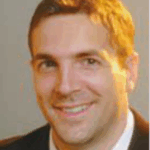 David A. Tallman, DC, ND, co-founder of ND News & Review, continued his family tradition at the Ohio State University for his undergraduate education. He then attended Texas Chiropractic College in Pasadena, Texas, where he received a doctorate of chiropractic with an internship focus on orthopedics and radiology. Dr. Tallman went on to medical school to earn a doctorate of naturopathic medicine at Southwest College of Naturopathic Medicine in Tempe, Arizona. He is a board-certified, licensed chiropractic physician (DC) and a licensed naturopathic medical doctor (NMD). He is also board certified in physiotherapy. Dr. Tallman is in private practice in Scottsdale, Arizona, where he treats orthopedic and rheumatological conditions.
David A. Tallman, DC, ND, co-founder of ND News & Review, continued his family tradition at the Ohio State University for his undergraduate education. He then attended Texas Chiropractic College in Pasadena, Texas, where he received a doctorate of chiropractic with an internship focus on orthopedics and radiology. Dr. Tallman went on to medical school to earn a doctorate of naturopathic medicine at Southwest College of Naturopathic Medicine in Tempe, Arizona. He is a board-certified, licensed chiropractic physician (DC) and a licensed naturopathic medical doctor (NMD). He is also board certified in physiotherapy. Dr. Tallman is in private practice in Scottsdale, Arizona, where he treats orthopedic and rheumatological conditions.




